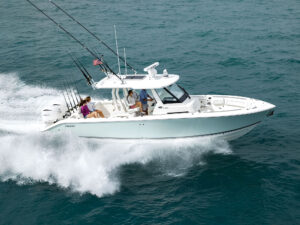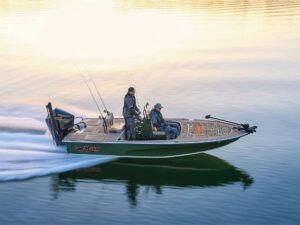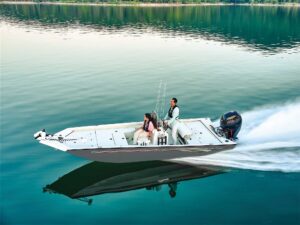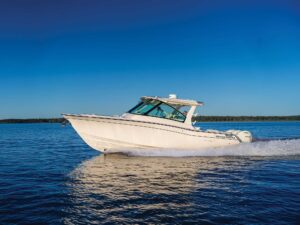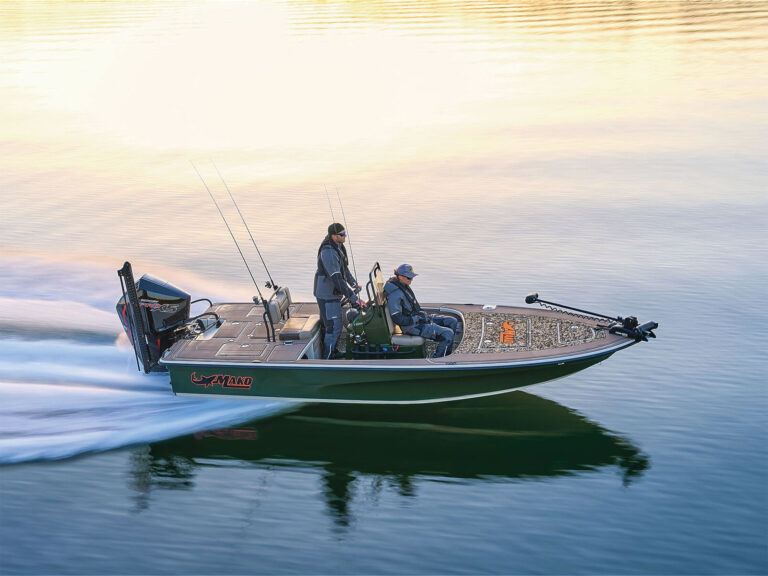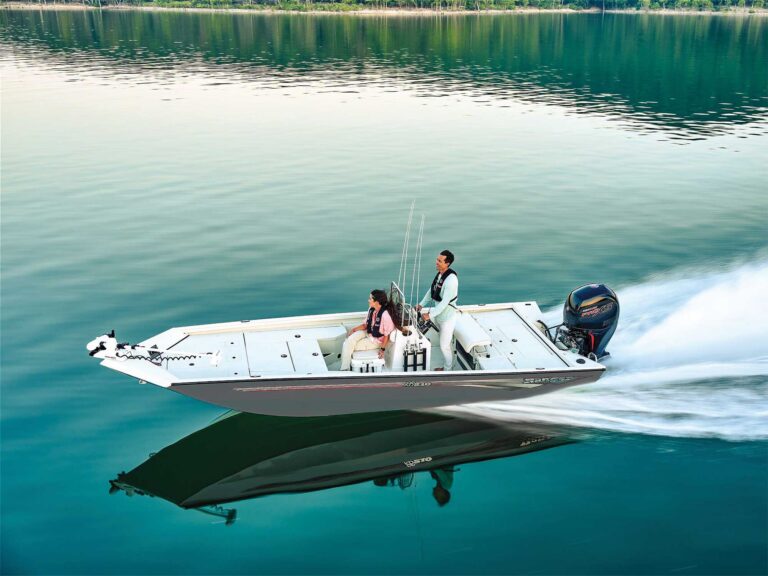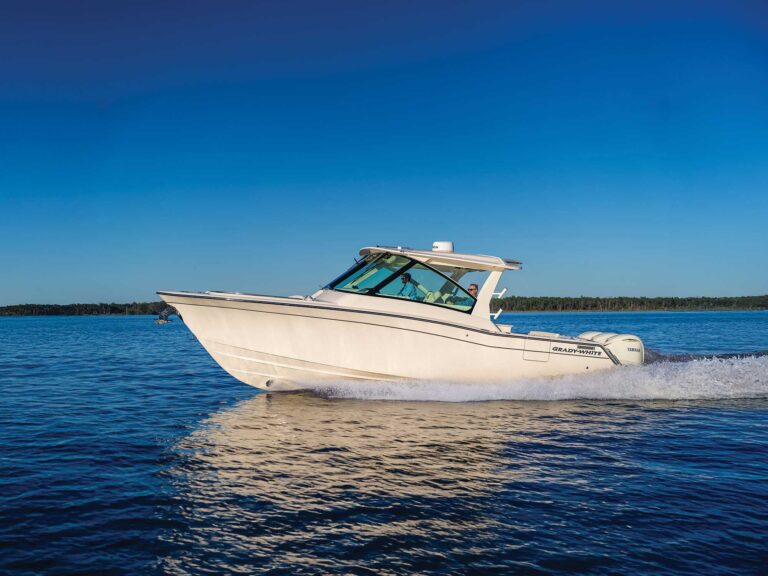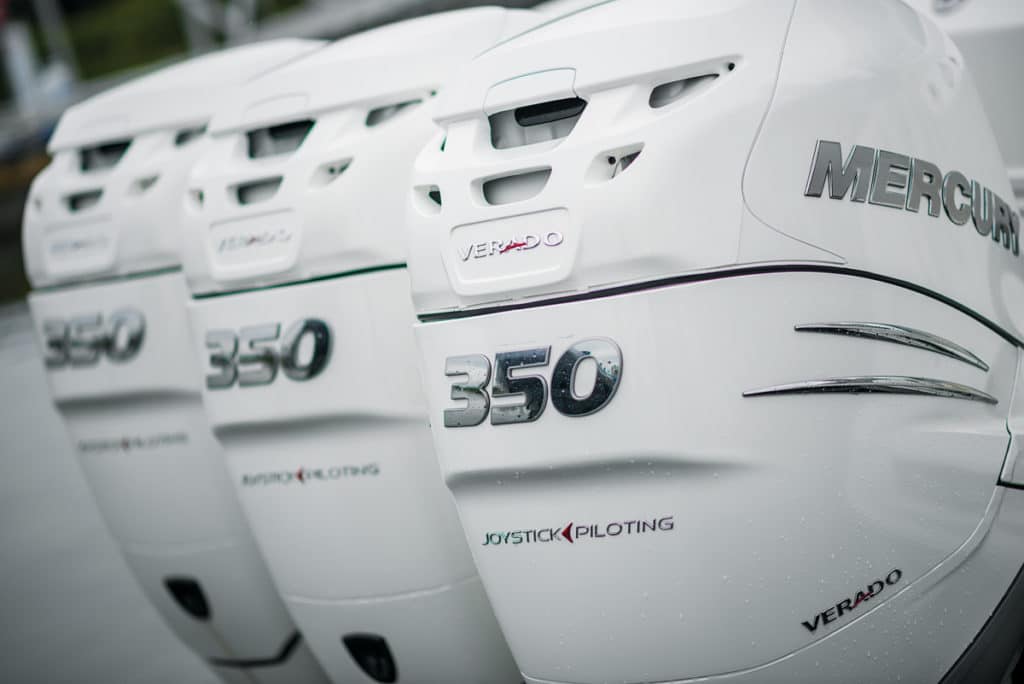
Mercury outboards have a lot to offer, starting with Merc’s new Verado 350. It took Mercury Marine three years to squeeze 16 percent more power from its supercharged, 2.6-liter Verado outboard. You’d think it would be easy — just turn a screw on the side of that supercharger to bump up the boost and presto! More gusto. Viva Verado 350!
Alas, wringing 350 ponies out of a Verado and ensuring that it’s consumer friendly, as opposed to the race-intended Verado 350 SCi, are not that simple. Remember that this powertrain is entering its second decade of production and that the engine was originally designed to make 275 maximum horsepower. I mean, you want it to run all day on 89-octane fuel and have a three-year warranty and get you and your big rig to the Bahamas and back once a month, right? So three years was the time it took to tune up the motor and then to test it to death. The result could be the apogee of Verado, because I don’t think Merc can take this motor further and sell it with a standard warranty.
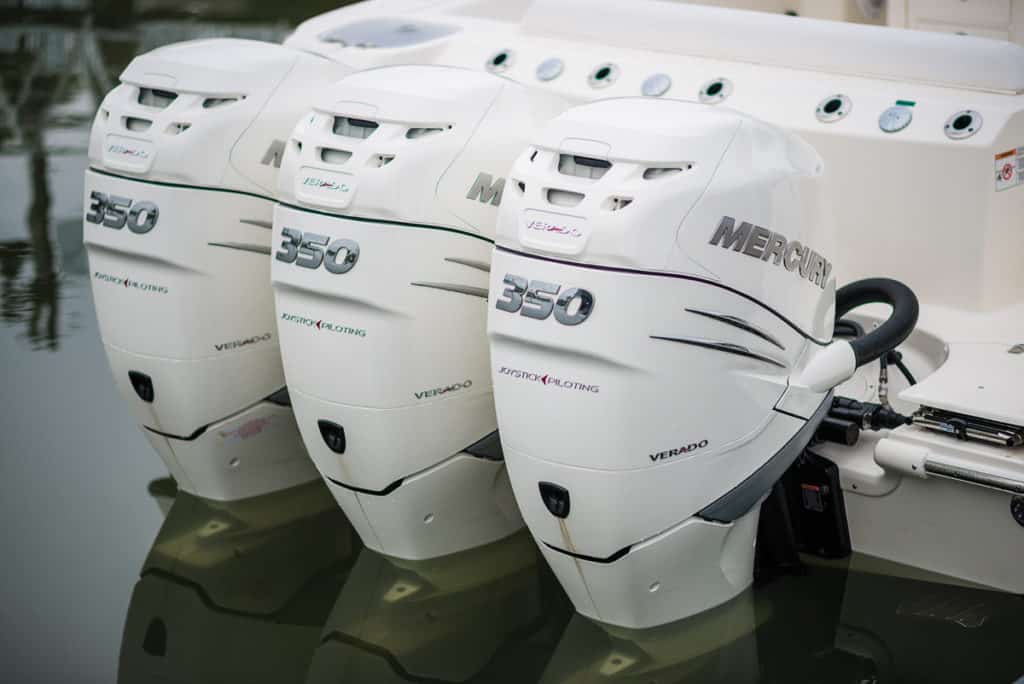
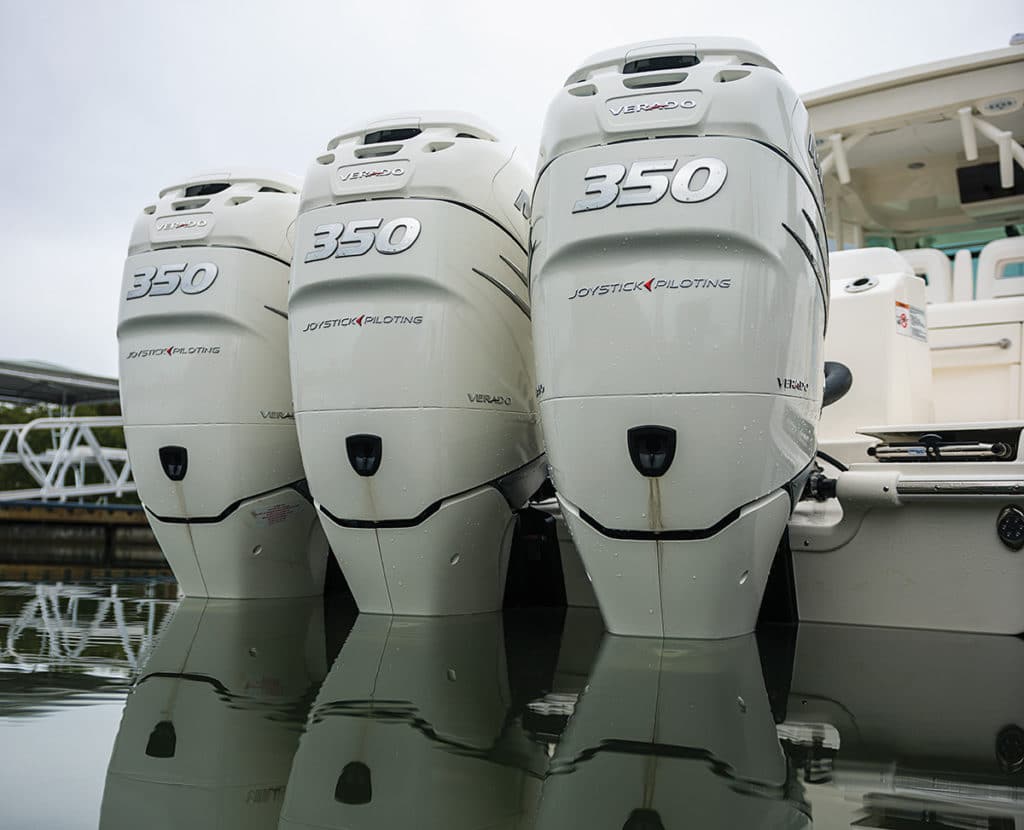
In addition to the new Verado, which we ran and tested aboard a Boston Whaler 370 Outrage, Mercury is introducing a 400 hp outboard under the Mercury Racing marque and a sterndrive, the Mercury Racing 1550 with dual fuel capability. This last engine can run as a 1,350 hp motor or as a 1,550, depending upon the fuel and by using a supplied fob to remap the ECU.
The world needs a Verado 350 because it already has a Verado 300. And maybe because Yamaha offers the F350. Offshore battlewagons rigged with quad Verado 300 motors could run triple Verado 350s and save a load of weight and dough with acceptable performance. Of course the more likely scenario is strapping quad 350s on the same boat. Because this is America, damn it. But think harder about the big-motor market. Imagine the savings in weight, rigging, fuel and maintenance to be gained by running a midsize center-console with a single Verado 350 instead of today’s common twin 200 motors. Pontooners already running a 300 are begging for more power. Bay boaters and walleye anglers currently stuck at 300 horsepower will gladly order a 350 if the weight is manageable.
Of course 350 horsepower was beyond the mission of the Verado team when the motor debuted in 2004. Bumping the Verado 275 to 300 was one thing. Reaching 350 was more of a leap in Mercury outboards history.
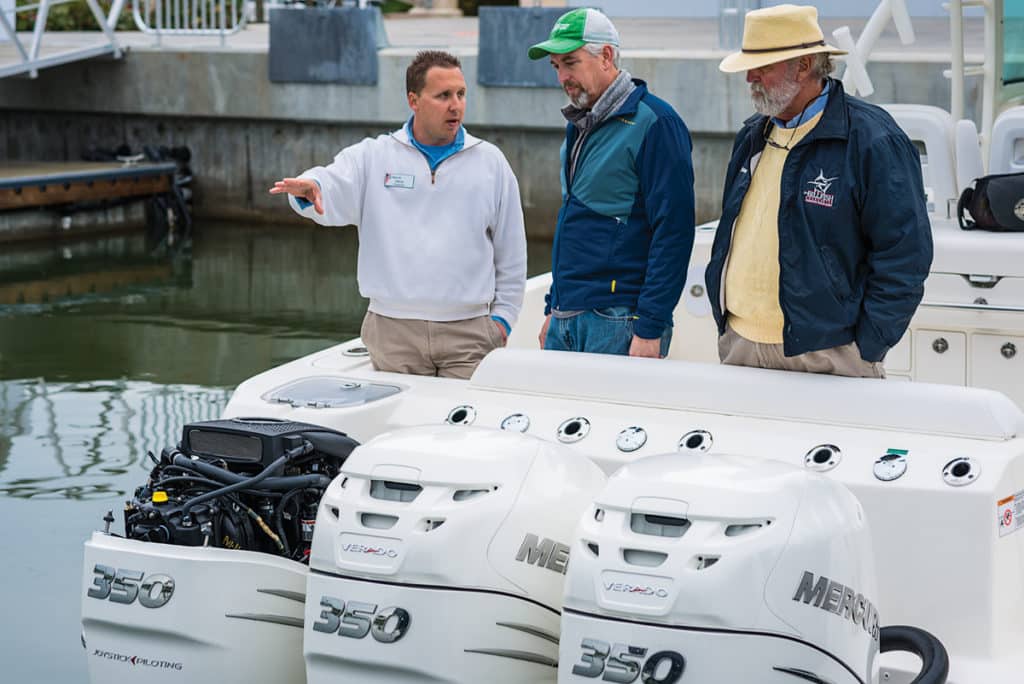
“The challenge was not in simply making the power from our 2.6-liter (156 cid) architecture,” said Mercury product integration manager Chris Chapman, who led the project and was at the helm for our test of the new motor. “The challenge was to make that power on regular-grade fuel, with durability acceptable to the consumer and the same warranty we offer with other Mercury outboards. We’ve reached a high level of power density. Beyond this it gets pretty exotic.”
The first step in tuning the Verado up to 350 horsepower was in fact improving airflow into the combustion chambers and raising the supercharger boost pressure by 6 percent, and mass airflow by 10 percent. Increasing the intake air pressure also raises its temperature, which is why the Verado 350 has a new liquid-cooled supercharger — to cool the air exiting the supercharger and thus raise its density before it enters the charge-air cooler.
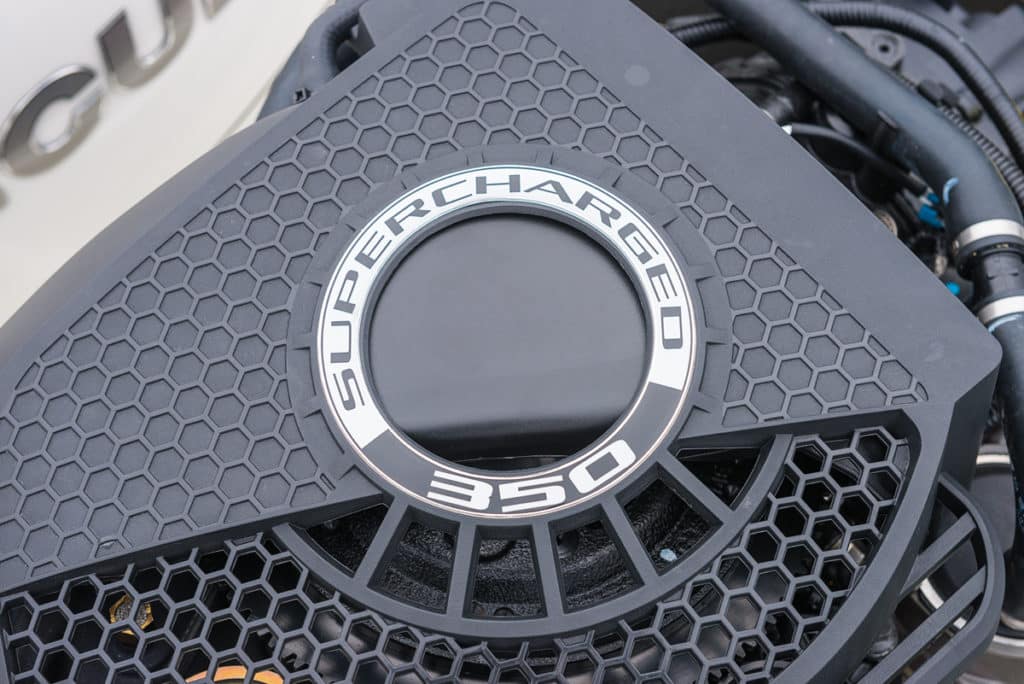
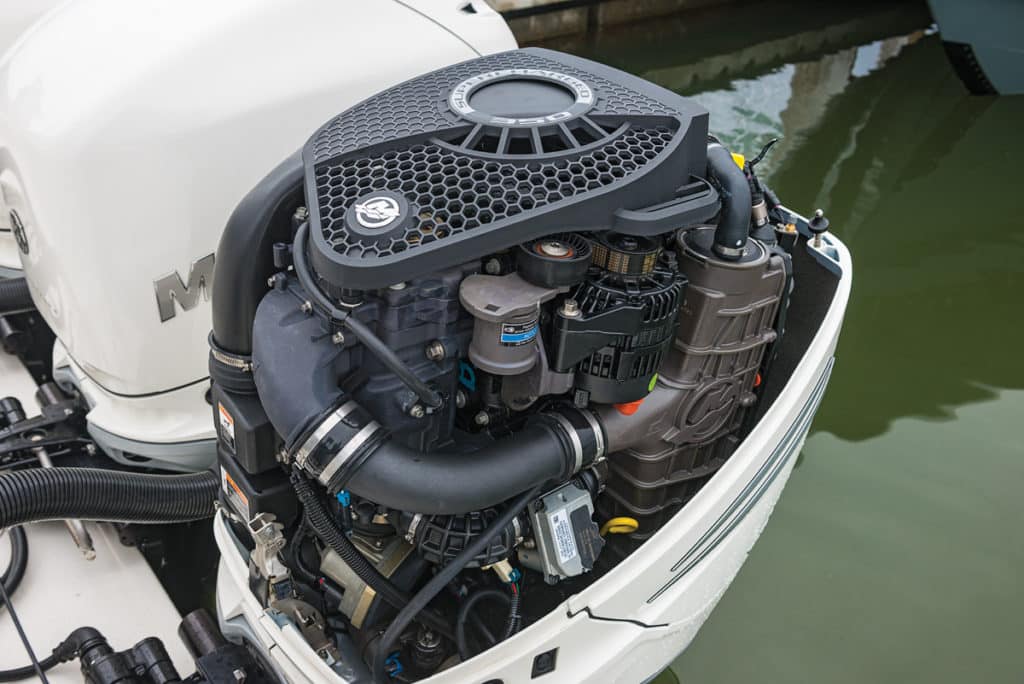
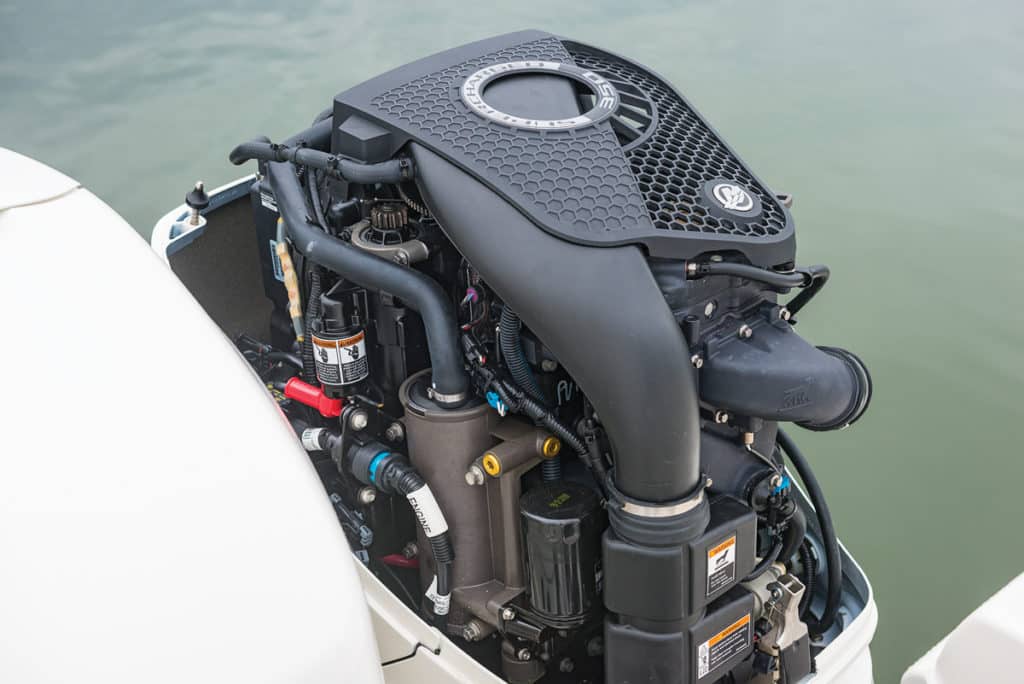
*Boost-pressure increase of 6 percent
*New liquid-cooled supercharger
*New camshaft profile
*New valves
*New, reshaped cylinder head
*New ventilated flywheel cover
*New intake snorkel
*Elimination of onboard fuel filter Boating Magazine
To take best advantage of the increased charge pressure, the Verado 350 has specific camshaft profiles, valves and valve springs, and a reshaped cylinder head. A new, molded flywheel cover is perforated to better vent heat away from the powerhead below and lower overall temperature under the cowl. A new intake snorkel snakes over the top of the powerhead with its opening positioned close to the air induction port on the back of the cowl to capture the coolest air possible. Finally, the fuel filter under the cowl was removed to eliminate the possibility of vapor lock occurring in extreme conditions. Mercury points out that most of its Verado customers are already rigging remote filters on their Mercury outboards anyway.
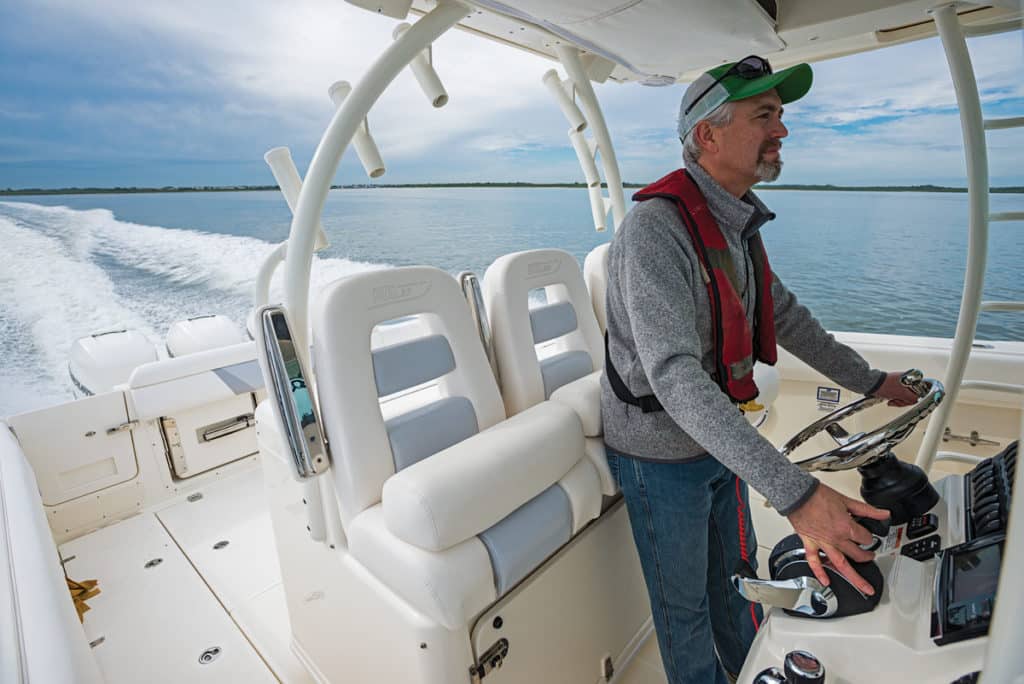
The Verado 350 is fitted with the 5.44-inch-diameter “HD” gear case with 1.75:1 gears and a 1.25-inch prop shaft. Props up to 16 inches in diameter fit this case, including the Enertia ECO prop. The case is painted silver because it looks faster. The Verado 350 is also equipped with race-style guide plates to stabilize the engine and improve handling at high speeds. This motor mounts on 26-inch centers and will be offered in 20-, 25- and 30-inch lengths, in classic Phantom Black and in two tones of white: Cold Fusion and Warm Fusion. Dry weight ranges from 668 pounds to 695 pounds, or about 21 pounds more than a Verado 300. The other outboard in this class, the 5.3-liter Yamaha F350, weighs 763 pounds with a 25-inch shaft, or 81 pounds more than a similar Verado 350. The V-8 Yamaha F350 also requires wider, 28.6-inch mounting centers.
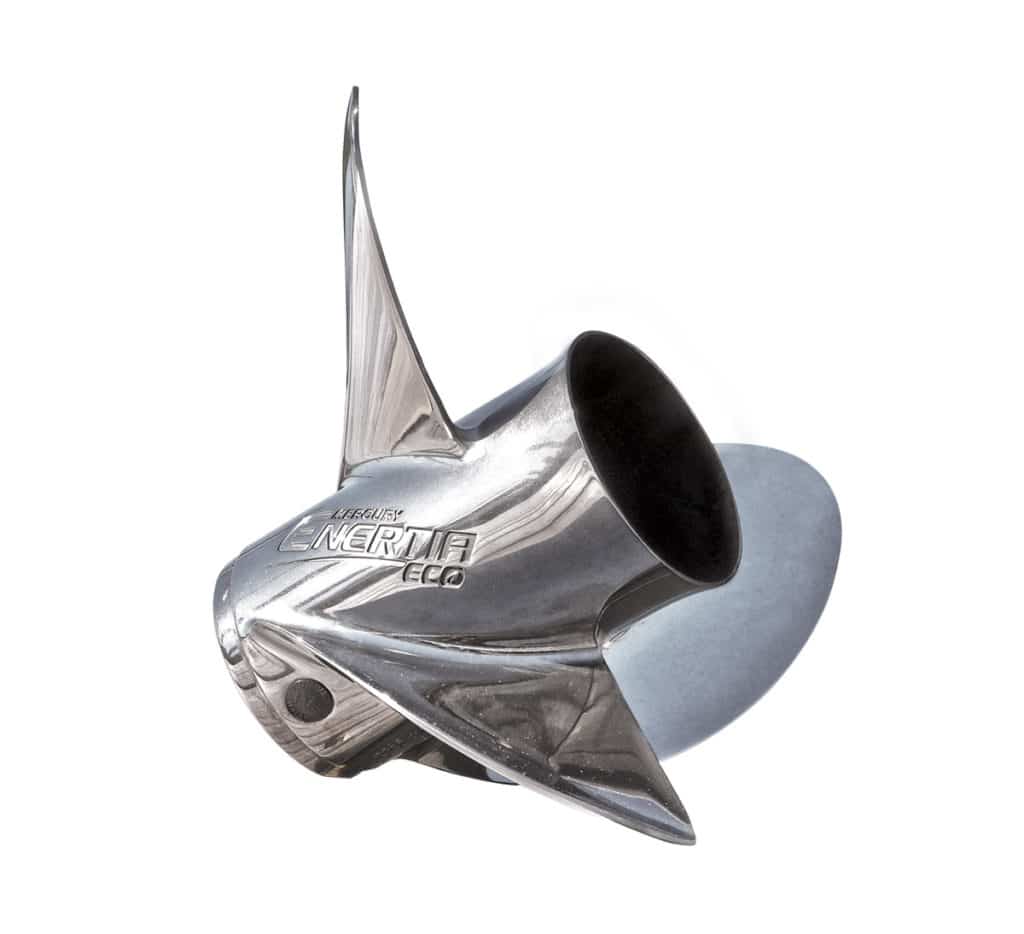
Mercury developed a new propeller series for 2015 too. The ECO prop was designed with input from anglers seeking increased fuel economy. During our testing the ECO prop improved fuel economy by more than 20 percent. Mercury Marine
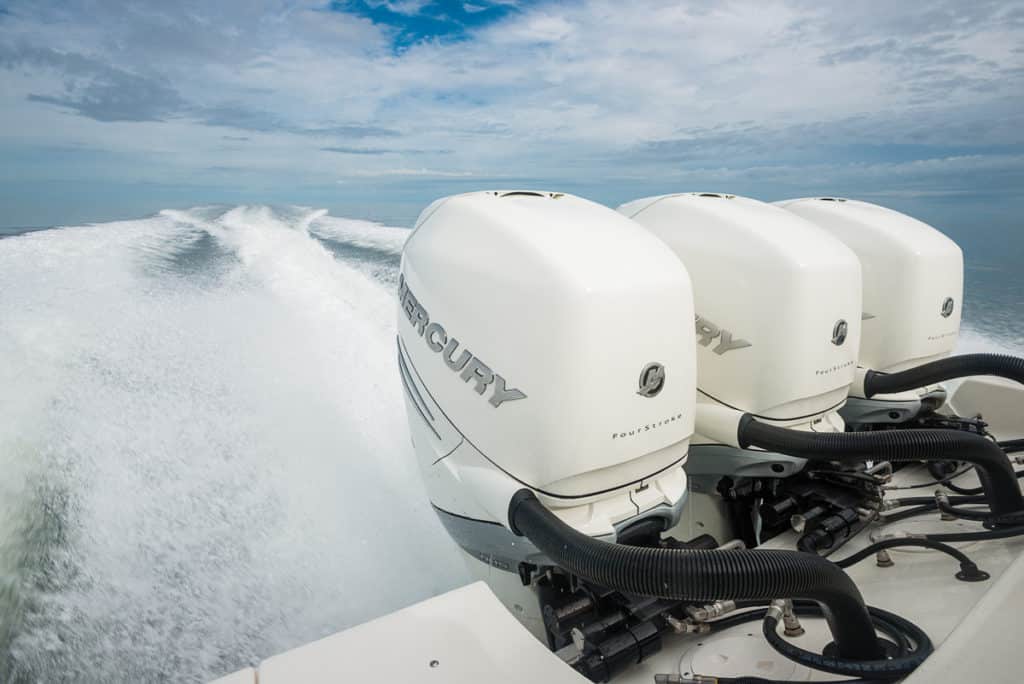
All other Verado features are retained on the 350, including the vibration-damping Advanced Mid Section (AMS) with perimeter mounts, electrohydraulic power steering, SmartCraft Digital Throttle & Shift and optional Joystick Piloting for dual, triple and quad rigs, which includes the popular Skyhook boat-holding feature. All Verado 350 motors are equipped with the idle charge system, a feature that electronically raises engine idle rpm to boost the charging output by 9 amps when it senses low battery voltage. Merc says that, as with the Verado 300, 91-octane fuel is preferred but 89 is acceptable.
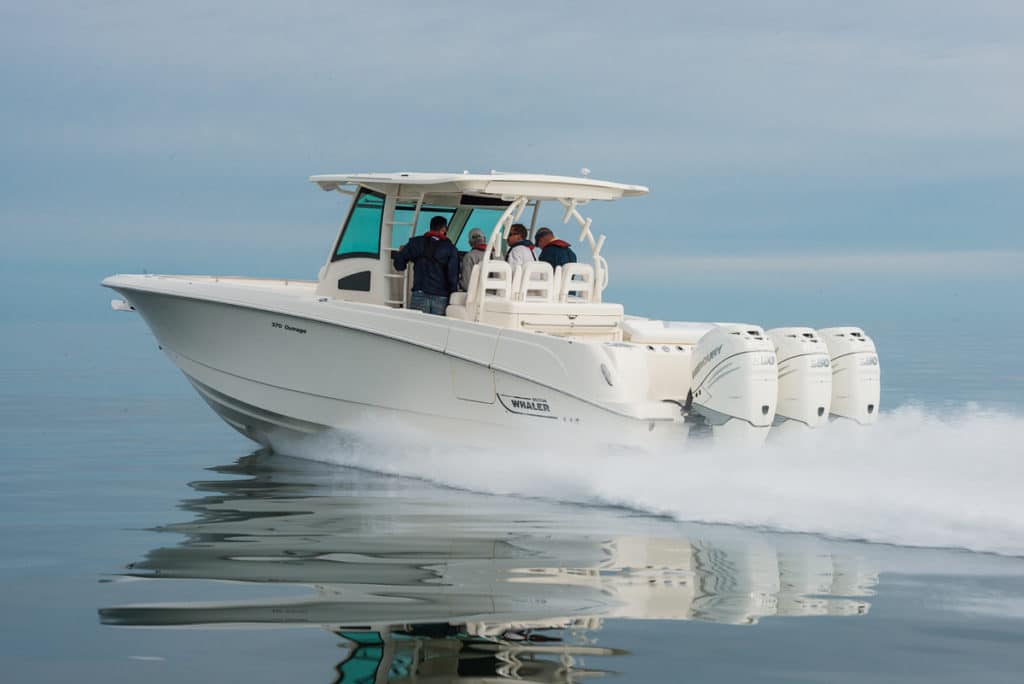
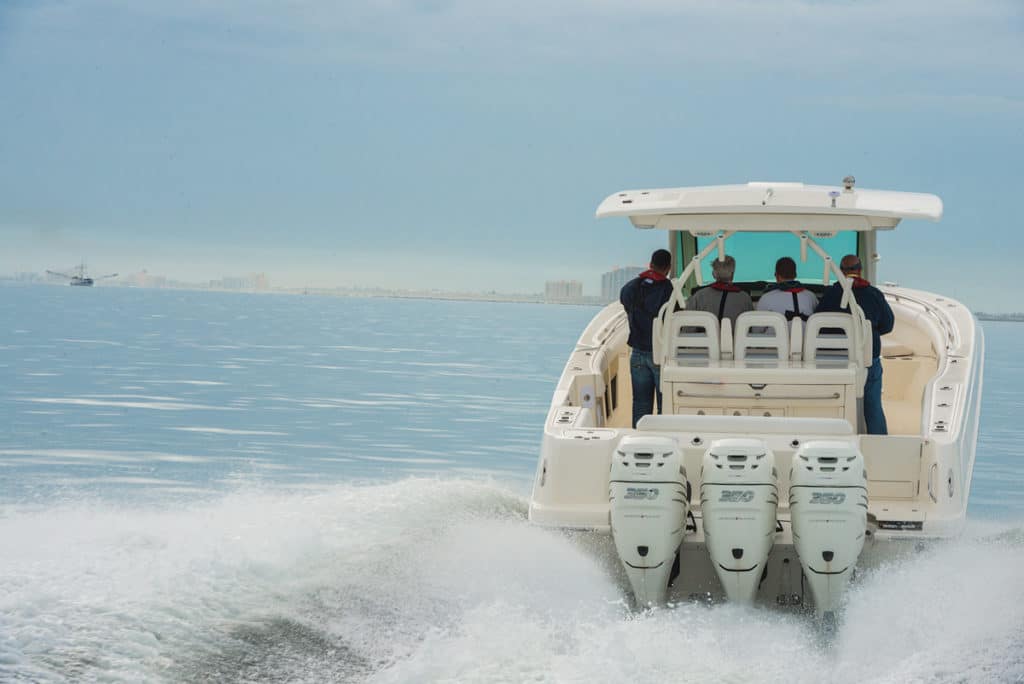
The Verado 350 will have a suggested retail price of $27,505, in a 20-inch shaft length, or $3,210 more than the Verado 300. A Yamaha F350 starts at $30,685. Builders will determine the price on factory-rigged boats. Whaler says the 370 Outrage with triple Verado 350 motors will cost $13,881 more than the same boat with triple 300 motors. What that gets you is hard to determine exactly — your results may vary, as they say. During our test, top speed peaked at 55.5 mph on multiple runs on a flat-calm Atlantic, compared with 54.7 mph reported on the Whaler performance bulletin for the 370 Outrage with triple Verado 300 outboards, the same props and a similar fuel load. Merc adds that the performance gain should be greater, up to 5 mph in top speed, on lighter boats and those that respond well to transom lift. Cruising speed and fuel economy seem to be about the same for the triple 350 and triple 300 rigs. Zero to 30 mph came up in a respectable 8.3 seconds with the triple 350 motors. The supercharged Verado midrange poke — for my money, still the best kick in the backside my outboard money can buy — remains undiminished, very entertaining and also useful when sea conditions call for power on the uphill side of a big swell.
If 3 to 5 mph more speed seems like a modest gain given the added cost, then you are not a customer for these Mercury outboards. If squeezing all the potential from your boat really matters, Merc just gave you a way to squeeze a little harder.
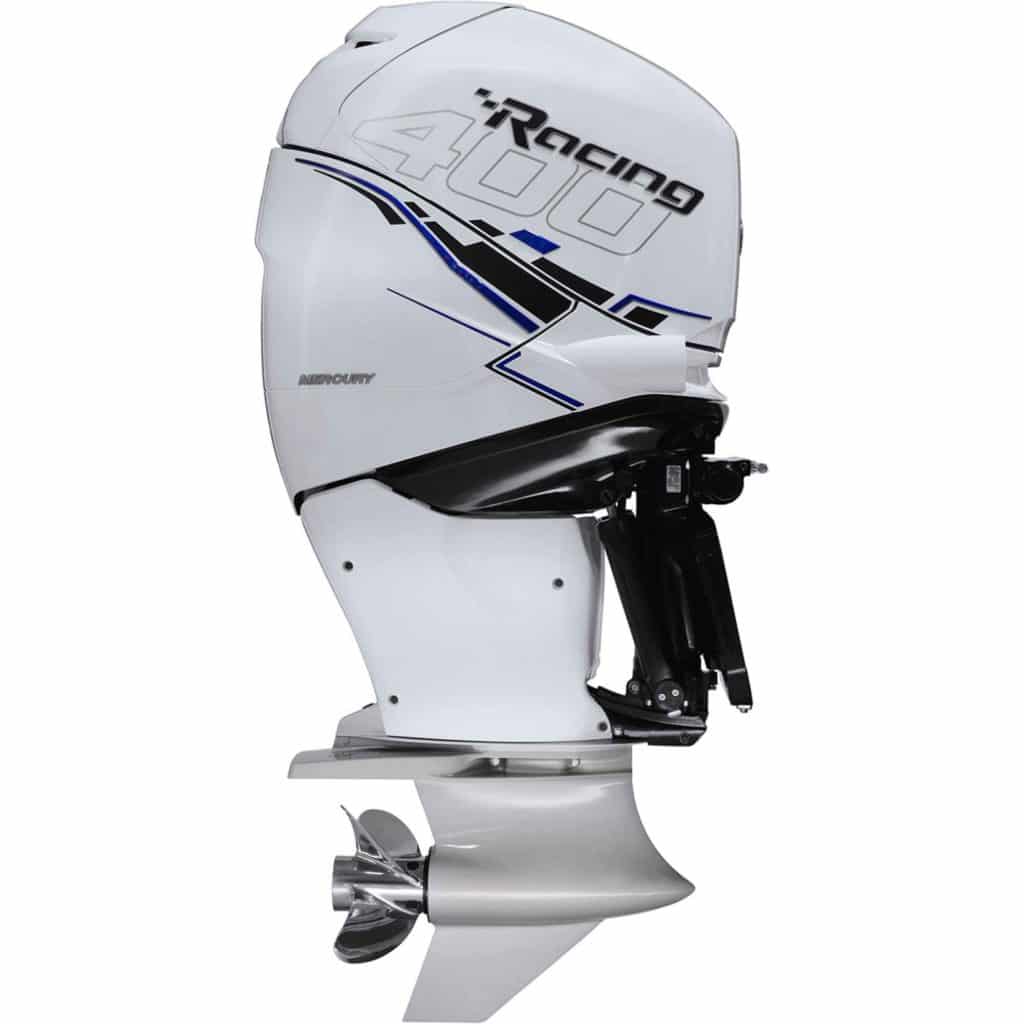
Mercury Racing Verado 400R
The new Mercury Racing Verado 400R is a potent replacement for the Mercury Racing Verado 350 SCi outboard. This new 400 hp outboard is a screamer — wide-open throttle range is 6,400 to 7,000 rpm — aimed at owners who put performance first. Displacement remains 2.6 liters, and powerhead components are similar to those developed for the Verado 350, including the water-cooled supercharger and the molded intake snorkel. Gone is the “ram air” cowl used on the 350 SCi. The 400R uses a standard Verado cowl with racing graphics that’s more practical offshore and quieter than the 350 SCi. More good news is that the 400R will run on 89-octane fuel, thanks to a sophisticated new knock sensor it shares with the Verado 350. Mercury Racing says that feeding the 400R 91-octane gas, however, may be the best way to extract peak power in some conditions. The 400R is also available with optional joystick control when equipped with the Sport Master cambered-skeg gear case. The joystick was not offered at all on the 350 SCi.
Gear-case options include the 5.44-inch Verado HD 1.75:1 case or the Sport Master with either a straight or cambered skeg. The crescent-shaped Sport Master case is designed for speeds over 85 mph and features dual water pickups. The cambered skeg compensates for side torque in some applications. Merc says the addition of the Sport Master option will make this motor more attractive to high-speed catamaran rigs. Mercury Racing has also developed a heavy-duty tie bar for this engine.
The 400R will be offered in 20-, 25- and 30-inch shaft lengths, in right and left rotations, affording boaters a multitude of rigging options and performance targets. For single-engine applications, a cambered Sport Master without a joystick is available in 20- and 25-inch lengths and right-hand rotation only. The lightest version of the 400R — 20-inch length with the 5.44-inch HD gear case — weighs 668 pounds, according to Mercury, the same as the Verado 350.
Big power carries a big price: Manufacturer’s suggested retail price for the Verado 400R ranges from $31,530 to $36,120 with a two-year warranty. Color options are Phantom Black and Cold Fusion White with blue Merc Racing graphics. Blue accent stripes will be shipped with the motor but not applied, and accent stripes will also be offered in six alternative colors (sold separately) to allow the owner to custom-match a boat. Merc says application is an easy DIY task. Shipments of the Mercury Racing 400R will begin in early March.

